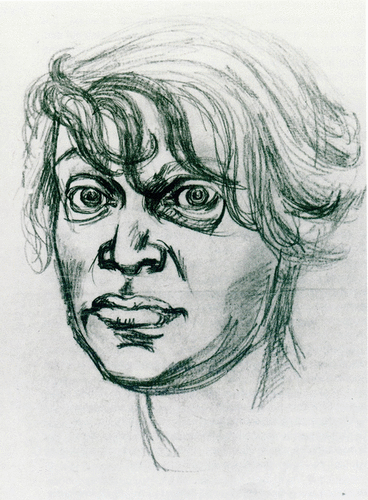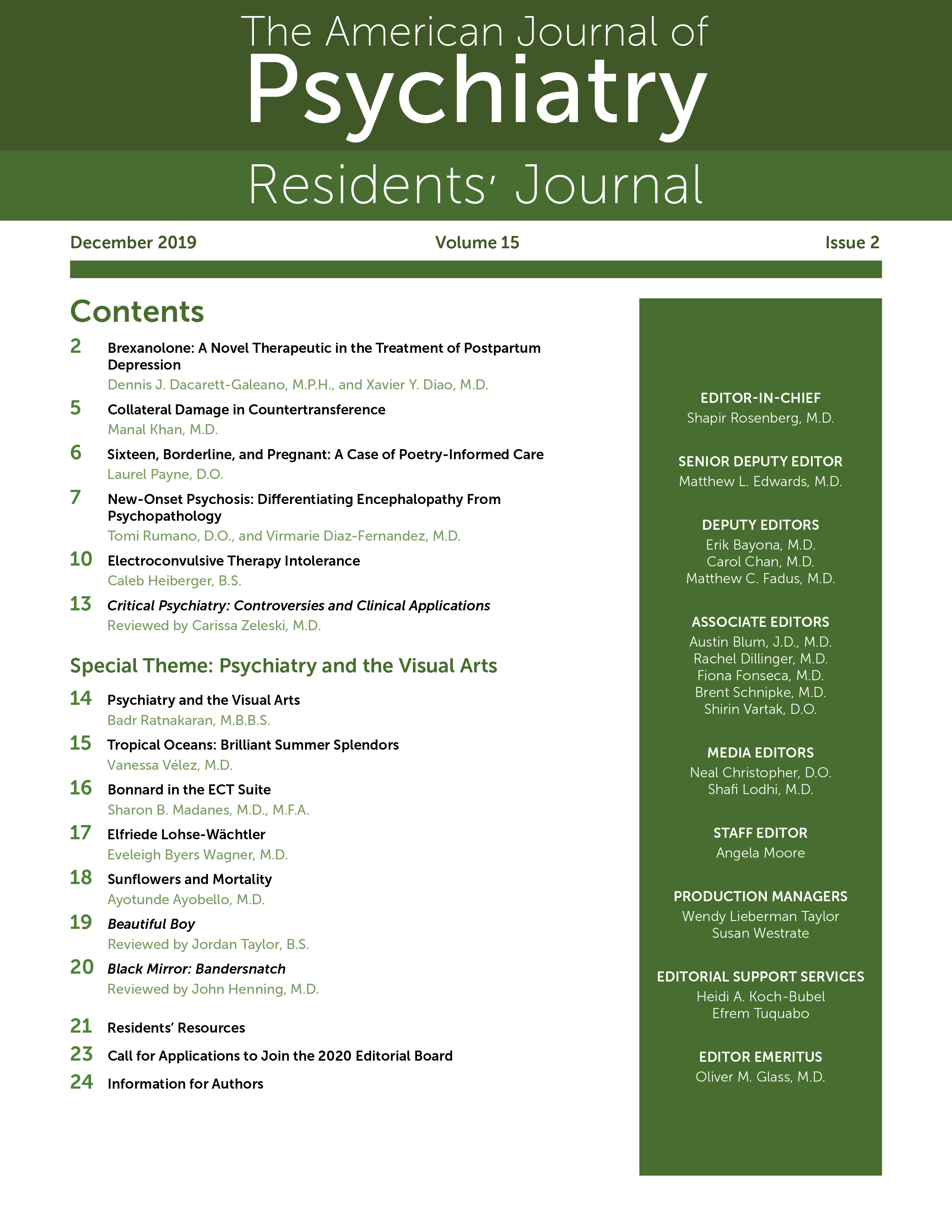Elfriede Lohse-Wächtler
Elfriede Lohse-Wächtler, born in 1899 in Dresden, Germany, was one of the few female artists active in Germany during the Weimar Republic, between the two world wars (1). The artistic movement of the time—New Objectivity—aimed to capture the reality of postwar Germany, reconciling chaos and despair with burgeoning social progress of a new democracy (2). Lohse-Wächtler, independent and progressive for her time, was known for her paintings of the city’s disenfranchised population (1). Although she was an acclaimed artist, her life was similarly plagued by poverty, trauma, and discrimination (3).
Living on her own from the age of 17, hers was a stressful life in a society still judgmental of female independence. In her early 30s, she was hospitalized for what has been described as a nervous breakdown (1). While hospitalized, she was diagnosed as having schizophrenia, although the basis of this diagnosis remains unclear (1, 3). During her hospital stay, she drew portraits of fellow patients and herself in a series later referred to as "Friedrichsberg Heads" (1). This self-portrait (Figure 1) was drawn with pencil and is minimalistic in its use of line and shading. Lohse-Wächtler imbued her art with realism and conveyed sympathy for her subjects, which in this case was herself (3). Although she appears weary, with darkened circles beneath her eyes, her bold features captivate the viewer. Her eyes transport through us, and we wonder what she sees. Her expression, resolute, exudes an inner strength. Does she see the darkness of an unknown future, or does she perhaps dream of artistic freedom? We wonder with her, and our hearts feel heavy.

FIGURE 1. Elfriede Lohse-Wächtler (1899–1940): Self-Portrait, in the State Hospital Friedrichsberg, Hamburg, February 17, 1929a
aReproduced with permission from The Picture Art Collection/Alamy Stock.
In the period after her first hospitalization, Lohse-Wächtler produced avant-garde works of art, which challenged the social norms of the time (3). During the Nazi party’s rise to power, she was labeled a producer of degenerate art, and her paintings were banned and destroyed (1). As this storm of fear and hate overtook Germany, Lohse-Wächtler and many others diagnosed as having a mental illness underwent forced sterilization, with the goal of "ridding society of genetic defects" (1). Under the T4 program, Adolf Hitler ordered the mass killing of the "mentally ill, physically ill, and those deemed unworthy of life," and Lohse-Wächtler was murdered in 1940 at Sonnenstein Euthanasia Center in Pirna (1). Elfriede Lohse-Wächtler’s life is a reminder of the devastating power of hate and the unfortunate role our profession has played in the deaths of innocent persons. Almost 100 years later, her artwork remains relevant and implores us to view others with compassion and to be advocates for our patients in the face of injustice.
1. Elfriede Lohse-Wächtler. Luxembourg, Encyclopaedia Britannica, 2019. https://www.britannica.com/biography/Elfriede-Lohse-Wachtler Google Scholar
2. : Splendor and misery in the Weimar Republic: pictures of the uneasiness of an era; in Splendor and Misery in the Weimar Republic: From Otto Dix to Jeanne Mammen. Edited by Pfeiffer I. Munich, Hirmer, 2018 Google Scholar
3. : Elfriede Lohse-Wächtler: a feminist view of Weimar culture. Woman’s Art J 2008; 29:23–30 Google Scholar



